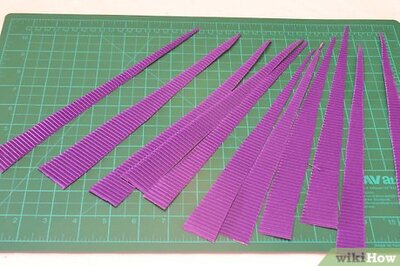
views
Sumaira is a woman of today. With a successful corporate career behind her, her life is a kaleidoscope of adventure, travel, camaraderie with friends, cultural expeditions and a flamboyant sense of dressing. However, about three years ago, when she decided to walk the aisle with her beloved, she chose to do it all in traditional style. For her bridal trousseau and intimate bridal guests from the groom’s family (her groom being an American), she decided to pick up one handloom weave from each state of India. From the Paithani of Maharashtra and Patan Patola of Gujrat to the Muga Silk of Assam, and from the Kanni of Kashmir to the Pochampally of Telangana and Kanjeevaram of Tamil Nadu, she collected them all. In the process of shopping for these priceless jewels, what she discovered was not only a reinforcement of the pride in India’s rich handloom heritage but also the pain and gloom that overshadowed the lives of women like her involved in scripting the timeless saga of handloom history since time immemorial.
Historically, women weavers have been a significant part of handloom weaving practices. But this contribution goes unnoticed since weaving is an in-house activity for most artisans who live and weave from their homes. Adding to this, the modernisation of the handloom sector along with a couple of other factors have been pushing women even more firmly towards the margins.
According to the Fourth All India Handloom Census, 2019–20, nearly 72 per cent of handloom weavers in the country are female. Women weavers in India, today, number over 38 million. Most belong to traditional families of handloom weavers, and ever since they were young girls, have been handling most of the pre-weaving work such as preparation of the yarn and the looms, dying and/or tying and dying yarn and fabric, and embellishing garments by hand embroidering them. Even if women are not weaving, they will be part of the allied workforce since it involves the entire family. For handloom, three allied workers are required by the main weaver, and they invariably would be from the same family, involving womenfolk.
“A good life is like weaving. Energy is created in the tension. The struggle, the pull, and tug are everything.” ― Joan Erikson
The life of a woman weaver is much like the skill she practices and the saree she painstakingly weaves and her energy that is created in the tension of making ends meet drives the entire household. The struggle, the pull and the tug that is her soul song stretch her imagination and artistry to the point of perfection, however, sadly, do not equally bestow her with the acknowledgement, appreciation and remuneration she deserves for ages now.
The labour of women and their contribution to handloom needs to be woven into the larger perspective when understanding the handloom sector. It should be understood that there are at least 25 pre-weaving activities that women are engaged in that require immense patience and perseverance which usually gets qualified as allied or secondary work. But this work is of utmost importance for the survival of the handloom sector.
It is said that India makes 95 per cent of the world’s handmade textiles, a glorious testament to our 2,000-year-old craft heritage, unique to each geographical community within the country. This diversity in textiles and the superior artistry of craftsmen is unmatched elsewhere. Despite the magnitude and importance of the handloom sector, hand craftsmanship is on the decline. According to the 4th All India Handloom Census, the country is home to over 3.5 million handloom workers today, (down from 6.5 million in 1995-96), of which 72 per cent consist of women. Handlooms have been on a decline over the decades. This is a generational skill but lack of income (67 per cent of weavers earn less than Rs 5,000 a month) and absence of dignity of labour are deterring the current generation from entering the industry. In the last 10 years alone, we’ve lost 8,00,000 weavers.
Let us first examine the problems of the handloom sector as a whole which directly affect the condition of women involved in the industry as well.
The problems are layered. Despite multiple bodies, government schemes and funds geared at holistic change, long-term benefits don’t trickle down to the artisans. Handloom hubs like West Bengal, Odisha, Assam and Kerala are recurrently prone to natural disasters. For instance, nearly 48,000 weavers were affected by the Assam floods last year but there has been no campaign to safeguard them.
Handlooms in India epitomise the cultural richness and showcase the artistry of weavers across the world. Historically, weavers in India enjoyed high bargaining power. With the Industrial Revolution gradually eroding this bargaining power, the weavers became economically backward, and the perception of handlooms changed from that of a cultural activity that paid rich dividends to a barely sustainable activity.
General Problems of the Handloom Sector
The lack of effective policy support combined with the fragmented nature of the sector has given rise to many problems. Most of the problems concerning the sector can be broadly categorised into weaver and supply chain problems.
The first and foremost problem that a weaver faces is the lack of financial viability. According to the Handloom Census, approximately 67 per cent of the weavers still earn less than Rs 5,000 a month, which is less than the amount that an unskilled worker earns as per the minimum wage rule. The problem of low income has resulted in a decrease in the overall number of weavers from 43.31 lakh in 2009-10 to 35.25 lakh in 2019-20.
In addition, existing weavers are not showing an interest in handing the tradition over to the next generations. Further, most of the weavers depend on indirect sources of credit with high rates of interest. This is due to the low penetration of banking facilities in the weaver community. According to the Handloom Census, approximately 76 per cent of the weavers do not have access to banking facilities, let alone credit facilities from banks.
While these problems affect the weaver community at an individual level, there are numerous process-related problems affecting the supply chain as well. The primary problem lies in the procurement of raw materials. Most of the yarn purchased by weavers (approximately 76 per cent) is from the open market and the remaining is from government and co-operative societies. The price fluctuations in the open market eat up the profit margins of the weavers. On the marketing side, adequate sales support and proper branding are almost non-existent for the finished goods, due to which 64 per cent of the sales happen in the local markets. Furthermore, there is no simple way for a consumer to purchase an authentic handloom product via an e-commerce channel.
Gender Bias, Unfavourable Condition of Women
The modernisation of the Indian handloom industry ironically pushes women even more firmly towards the margins. Their earlier participation in contributing to the handloom sector is dwindling at a fast pace due to factors like the mechanisation of looms, the rise of middlemen and opportunistic city-based designers.
The unfortunate truth is that the women workforce in the handloom sector has been turned a blind eye towards, for ages. Comprising more than 70 per cent of the total handloom artisan strength as per government surveys, it is the female artisans that are contributing the most to uplift the handloom traditions that we are so proud of. Yet, it has always been the male artisans in the industry who are credited for the good weaves that come out. Meanwhile, it is assumed that the females merely do the menial tasks while following instructions given to them.
The Factors Responsible
- Over 50 per cent of the weavers’ families live a life of extreme poverty. Most of the profits are pocketed by middlemen and the many greedy fashion garment retailers.
- Health issues resulting from poverty add to their misery. Tuberculosis, anaemia, asthma, fading eyesight, and various skin and bone-related problems are common.
- Over 50 per cent of the women are semi-literate or illiterate, making them heavily dependent on men, be it their husband or sons. The school dropout rate among girls in their families is also quite high.
- They are neither given the chance nor the encouragement to do the weaving on their own and increase the earnings of the family.
- Despite most effort and time towards the completion of a handloom textile, the women have no say in the domain of sales, raw materials, design etc. The male members of the family usually get formally enlisted as the owners and primary workers while women are enlisted primarily as housewives who assist men and, hence are secondary workers.
- Weaving property, machines or looms are never purchased or enlisted under the names of the women of the house though the women may play a pivotal role in designing and delivering the handloom products.
- With the patriarchal nature of Indian society that puts women in lower status, womenfolk automatically face gender discrimination at the workplace even when they function independently.
- Skilled women weavers get dominated even by their less experienced sons only because of the gender discrimination mindset which still very strongly prevails in rural India.
Government Remedies and Way Forward
NHDP, CHCDS, YSS, SITP, TUFS etc. are policies designed by the Government of India at different stages to arrest and address the issues pertaining to weaver problems or supply chain problems. Smriti Irani, the then Union Textiles Minister, had announced the ‘Kamaladevi Chattopadhyay National Awards’ for women weavers & artisans, on International Women’s Day (March 9, 2017). This award was introduced to recognise the excellent craftsmanship and hard work being put in by millions of women artisans to preserve handloom and handicraft heritage.
Although there are many schemes and facilities offered by the Indian government, most of the weavers do not know the existence of these facilities. As per the Census 2019-20, the awareness about different benefits that can be availed by weavers averages 17 per cent for a selection of 11 schemes. This suggests an extremely poor awareness of the policies amongst weavers. Hence, it’s apparent that an efficient central network is necessary for disseminating important information to the weavers.
According to government guidelines, a handloom institute is to be established in every handloom town/city to create an individual identity for all the weavers and allied workers. This can be a very big leap for women in the handloom sector towards both establishing their identity as weavers or handloom entrepreneurs as well as interacting independently with the market and the consumers.
It goes without saying that unless there is a reformation in the social fabric and a reversal of the patriarchal mindset, there cannot be a positive metamorphosis towards women’s empowerment at a large scale. To bring about such a change at both the microcosmic and macrocosmic levels, we need to strengthen the pillars of education, self-employment and both economic and social empowerment for women so that they can make and implement decisions.
Three years have passed since Sumaira’s wedding and she is back in India once again, this time for her daughter’s rice ceremony. And she is surprised as she goes shopping for handloom sarees from different parts of the country, once again, for her daughter’s rituals.
Things are slowly but steadily changing for the better. Though the average male-to-female artisan ratio on the loom is 60:40, there are some clusters where the male and female artisans are in equal forces, working side by side on the loom as equals like the Jamdani cluster. There are female weavers working on the loom by themselves like in the Shibori cluster. And there are clusters like the Kantha cluster which comprises 100 per cent female artisans where all decisions concerning design and product are taken by the women alone.
Sumaira, like all of us, looks forward to a day when women in the handloom sector will not remain “unsung warriors” anymore but will enjoy the pride, position, acknowledgement and dignity they deserve from the guilds, government and consumers alike. It may seem like a far-fetched dream right now, but it is certainly not impossible.
Debaroopa Bhattacharyya is founder and editor-in-chief of Tribe Tomorrow Network. Views expressed in the above piece are personal and solely that of the author. They do not necessarily reflect News18’s views.




















Comments
0 comment